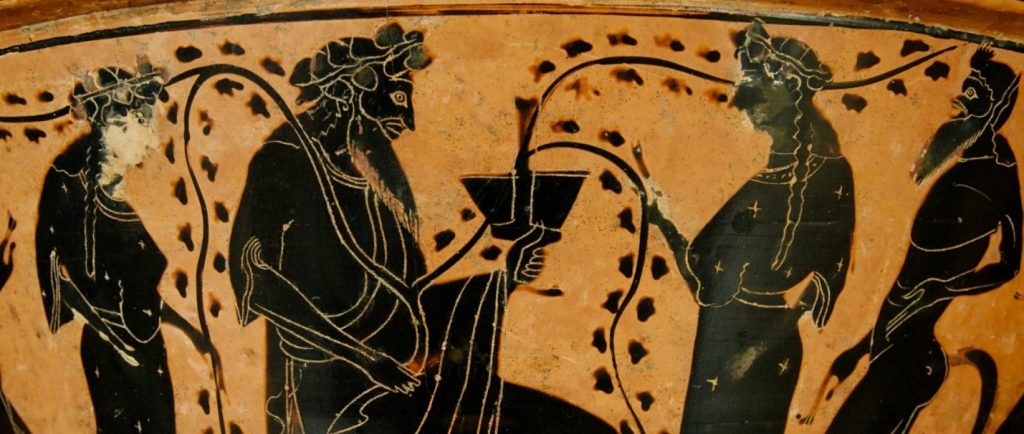From Massalia to Marseille: How the Ancient Greeks Influence(d) Provencal Cuisine
By Austin Davis • April 26, 2018
LEGEND tells us that nearly three millennia ago, a Phocaean Greek sailor known as Protis or Euxenes sailed the Mediterranean Sea in search of a trading outpost. Protis discovered a rocky cove (known then as the Lacydon) on the southeastern coast of Gaul (modern-day France) and there, he was welcomed by the Gallic king Nannus. Nannus invited Protis and his company to a feast held in honor of his daughter, the beautiful Gyptis, and the many suitors who sought her hand in marriage. When Protis and his men arrived, Gyptis was supposedly so overcome with love that she offered the ceremonial marriage cup to the sailor. Surprised and overjoyed, Nannus wed Protis and Gyptis, and, as a wedding gift, he presented the couple with the swath of land on the hills that overlooked the Lacydon. Here, Protis and Gyptis would go on to found the city of Massalia, which, over the course of nearly three thousand years, would become modern-day Marseille (Hodge 65).
 Gyptis Presenting the Goblet to Euxenes, A. De Neuville, 1896
Gyptis Presenting the Goblet to Euxenes, A. De Neuville, 1896
from A Popular History of France by Francois Pierre Guillaume Guizot
Marseille’s foundational myth is an interesting one because it establishes that the marriage of cultures has been intrinsic in the development of a Provencal identity since Marseille’s genesis in antiquity. This marriage of cultures is, perhaps, most evident in the cuisine of Provence, which has been permeated by Ancient Greek traditions regarding olives, oil, wine, and fishing since the days of Massalia. The region’s long history of embracing the Greek tradition has allowed the cuisine of Provence to maintain a culinary identity that, while not wholly French or Greek, is a unique combination of the two that embraces simplicity, freshness, and flavor.
The Mediterranean Sea is arguably the most important body of water in the Western world and has inspired the culture of Provence since its beginning. For thousands of years, it has been an arena for international commerce, warfare, and travel. It also offered the fishermen of Ancient Greece an abundance of fresh fish and seafood which, unlike goat, lamb, and other meats, did not have to be consecrated before consumption or offered to the gods in sacrifice (Davidson 61).
The shallow lagoons and ponds of Massalia’s coastline filled with the fish that are still popular in Provence today and fed by the Mediterranean, were familiar to Greek colonists. This familiarity led the Greeks to teach the tribal locals the way of the harpoon and the trident. Massalia soon began to offer cured and salted fish as one of its major exports (Hodge 55). In fact, salt preserved anchovies were popular in Athens, although the aristocracy preferred “delicacies” like eel (Davidson 65). Although anchovies in oil are more commonly used, these salty delicacies continue to flavor the cuisine of Provence today. With regards to agriculture, Massalia was renowned for two crops: olives and grapes. According to Hodge, it was Greek colonists who, when they saw a similarity between the landscape of southeastern Gaul and the landscape of their homeland instructed the Gauls in the art of viticulture and the cultivation of olives (51).
In addition to cured fish and olive oil, wine was produced and exported in great quantities. Hodge speculates that there was a large and exploitable market for wine with the so-called barbarians of the area who had never before tasted wine—or experienced its intoxicating effects (52). By 400 BCE, Massalia exported so much wine that it was shipped out in large bronze vessels called kraters (Cartledge 66). In fact, the historian Strabo describes that a cult of Dionysus, the Greek god wine and ecstasy, sprang up and thrived in Gaul (249). Greeks also brought the olive to Gaul and shared its many uses (food, seasoning, oil, even soap substitute) with the Gauls, who began to raise olive groves on the coastline.
 Dionysus attended by maenads and satyrs on an Attic black-figure krater, 525–500 BCE
Dionysus attended by maenads and satyrs on an Attic black-figure krater, 525–500 BCE
With the introduction of Greek fishing and agricultural traditions, Gallic culture flourished. As Massalia became a stronghold of the ancient world, was conquered by Romans and Muslims, suffered two bouts of plague and two World Wars, Provencal cuisine came into its own as a hybrid of French and Greek food. This hybridization has allowed Provencal cuisine to remain independent from traditional French food and all its complexities, especially those that define the haute cuisine of metropolitan areas like Paris.
In comparison to the rustic cuisine of Provence, the internationally recognized cuisine of Paris, called haute or grande cuisine, seems almost completely foreign. Haute cuisine finds its origins in the extravagant courts of French monarchs during the 17th and 18th centuries, when royals were served dishes of prepared tongue, caviar, or imported, exotic fruits. As the monarchy of France rose and fell, haute cuisine came to be defined by the efforts of professionally trained chefs. These chefs, most notably François Pierre de la Varenne, were responsible for the introduction of the mother sauces (espagnole, velouté, and béchamel) into French cuisine (Mennell 71-72). The mother sauces are foundational parts of French cuisine that are still mastered by novice chefs in contemporary culinary schools.
 King Louis XVI of France, Joseph Duplessis, 1775
King Louis XVI of France, Joseph Duplessis, 1775
Haute cuisine is characterized by complicated preparation, meticulous presentation, and an overabundance of ingredients. Popularized in Parisian restaurants and sold at exorbitant prices, haute cuisine has become synonymous with French food, although it is a poor representation of the diverse culinary landscape of the country. Provencal cuisine, which praises simplicity, showcasing individual ingredients, and accessibility, is a far cry from haute cuisine.
The essence of Provencal cuisine is best exemplified by dishes like pan bagnat and bouillabaisse. Pan bagnat, or “bathed bread” is a traditional Provencal pressed sandwich, perfect for picnics in the plains of the Cote d’Azur. Composed of a hearty, crusty loaf of bread, such as a baguette or boule, stuffed with tomatoes, onions, olives, mesclun greens (which originated in Provence!) and tuna, all dressed with salt, pepper, and olive oil, or a vinaigrette. Here, staples of Greek cuisine, such as olives, olive oil, and tuna, shine alongside crusty bread and mesclun, staples of Southern French cuisine.
Perhaps the most well-known culinary offering of Provence is bouillabaisse, a rich fish stew perfumed with saffron, garlic, and thyme. While not as obviously Greek-influenced as pan bagnat, bouillabaisse’s Greek-ness is found in the simplicity of its preparation. For traditional bouillabaisse, aromatics and root vegetables are softened in olive oil, then stewed in crushed tomatoes flavored and thinned with fish stock. Cuts of fish are added to the stew and allowed to cook until just opaque, then, shellfish, such as mussels or clams, are added. The dish is served on toasted baguette slices lathered with olive oil and rouille, a spicy red-pepper based aioli. While bouillabaisse is simple and relatively uninvolved, as was the food of the Ancient Greeks, it served according to the French tradition, with hearty, crusty bread and tangy aioli.
 Pan bagnat, photographed by Todd Coleman
Pan bagnat, photographed by Todd Coleman
for Saveur Magazine, 2012
Provencal culture and cuisine have been invigorated by the Greek tradition for thousands of years. Greek colonists brought their tridents, their olives, and their grapes (and their worship of the vine) and this infusion of Greek culture into pre-Roman Gaul is palpable in Provence today, as seen in the open air markets where fisherman proffer their salty harvests. This profusion of Greek-ness has imbued the food of Provence with distinct flavors, ingredients, and techniques that allow it to stand as a distinct and unique division of French cuisine. While simplistic and rustic, as was the food of the ancients, Provencal cuisine proudly sings the praises of bread, butter, and cheese, and is markedly, indelibly, undeniably French.
WORKS CITED
Cartledge, Paul. “Massalia.” Ancient Greece: A History in Eleven Cities. Oxford University Press, 2009, 61-70.
Davidson, James. “Fish, Sex, and Revolution in Athens.” The Classical Quarterly, vol. 43. no. 1, 1993, pp. 53-66.
Hodge, Trevor. Ancient Greek France. University of Pennsylvania Press, 1998.
Mennell, Stephen. All Manners of Food. 2nd ed., University of Illinois, 1996.
Strabo. Geographica. Translated by Horace Leonard Jones, vol. 2, Harvard University Press, 1988.